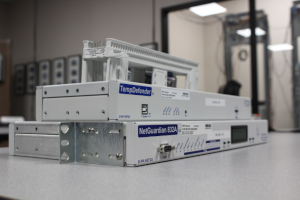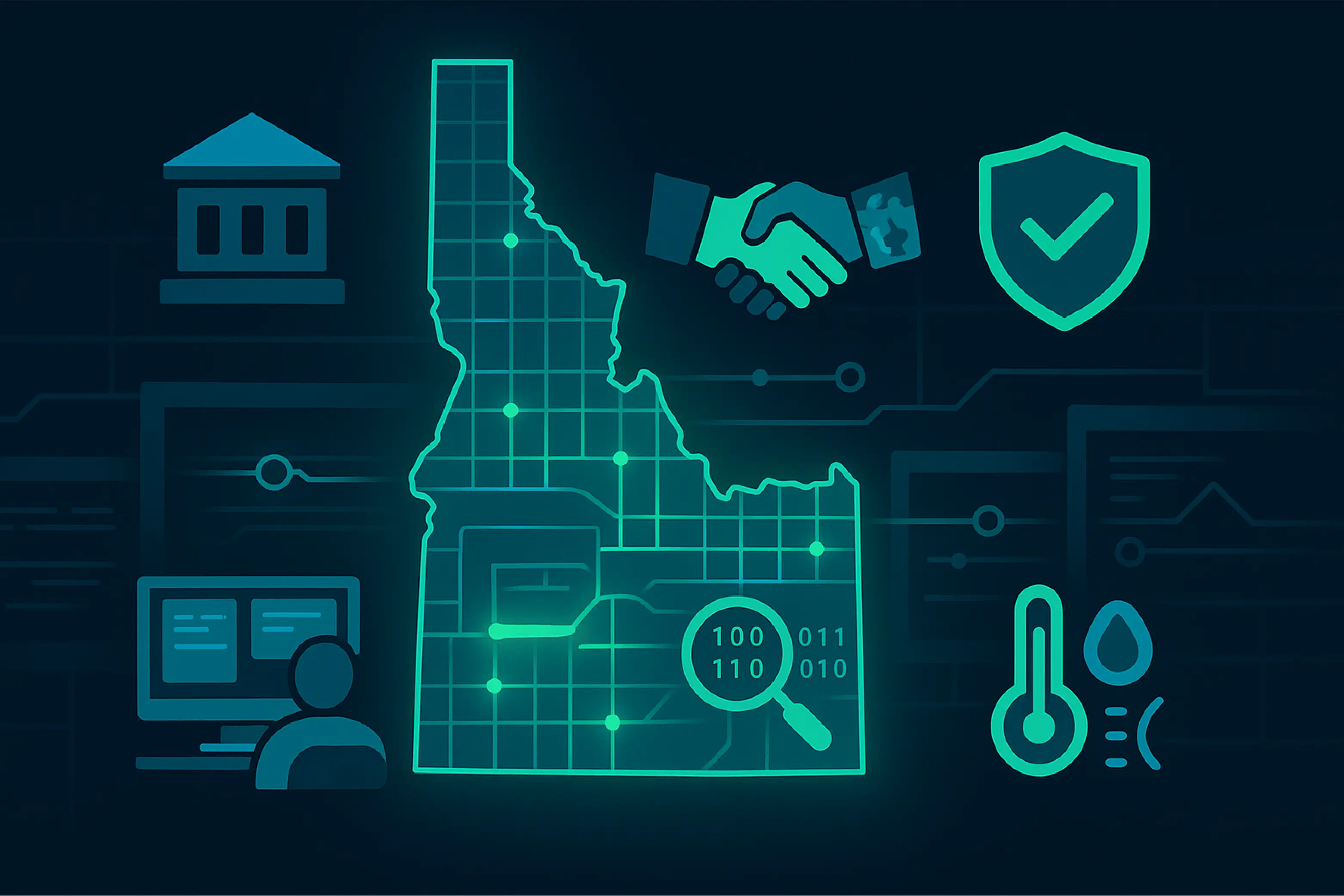Check out our White Paper Series!
A complete library of helpful advice and survival guides for every aspect of system monitoring and control.
1-800-693-0351
Have a specific question? Ask our team of expert engineers and get a specific answer!
Sign up for the next DPS Factory Training!

Whether you're new to our equipment or you've used it for years, DPS factory training is the best way to get more from your monitoring.
Reserve Your Seat TodayCyber threats don't end at your firewall - and they definitely don't stop at state borders. In Idaho, where cybersecurity teams fend off over 16 million attacks every month, they know just how true this is.
That's why Idaho's Information Technology Services (ITS), led by CIO Alberto Gonzalez, is taking a new approach to cybersecurity. A recent article from Gov Tech details how Idaho has built a new statewide, cross-sector security model. This model combines hands-on training, military collaboration, and real-time visibility into their systems.
And this isn't hypothetical. It's working in the real world, where real threats are discovered during training events.
Let's review what Idaho is doing right, where traditional cybersecurity strategies don't work anymore, and how your own public-sector entity can take practical steps toward improving both digital and physical defenses.

Cybersecurity isn't just "a box you check once a year", but too many agencies still treat it that way. Often times:
Worst of all, threats keep coming in the meantime.
Cybercriminals are attacking every "surface" of your infrastructure. That includes your software and your remote sites - many of which are unmanned, under-monitored, and essential to operations.
In 2025, Idaho raised the bar by creating a true training environment.
Instead of tabletop exercises or isolated labs, Cyber Discovery 2025 created a live simulation where government, military, and university teams battled in a realistic digital environment. One team launched simulated cyberattacks, while the other defended critical state infrastructure.
What made the difference was that the environment was quite realistic. It was real enough to uncover actual vulnerabilities and foreign threats. That's a major shift from "training for training's sake" to training that actually improves your live systems.
Cyber Discovery isn't just for IT staff. The Idaho Army National Guard, college students, state agencies, and local governments all participate.
This isn't one-way training. Military teams sharpen their skills while state teams get exposure to top-tier cyber tactics. The partnership also makes it easier to scale protection and intelligence-sharing across multiple jurisdictions.
Idaho created a dedicated threat hunting team to proactively scan for signs of intrusion. With 16 million monthly threats, automation plays a major role. That being said, nearly 500,000 attacks per month still need human analysis.
That's where threat hunters come in. They go beyond passive monitoring and look for patterns that automated tools might miss.
Idaho also uses federal grant funds to support smaller jurisdictions. Through the State and Local Cybersecurity Grant Program, ITS will fund assessments and remediation for cities, counties, school districts, and tribal governments.
They're also training the next generation of cybersecurity talent through a new apprenticeship program with Boise State and the University of Idaho.
This is a full-spectrum strategy that:
It's smart - and it's something your agency or region can learn from.
The ideal cybersecurity posture for your agency should look something like this:
That's the vision - and thankfully it's not out of reach.
However, you can't get there with siloed tools, manual processes, and aging equipment.
At DPS Telecom, we've spent decades helping government agencies and critical infrastructure providers build real-time visibility into their most important, most remote, most vulnerable sites.
You can have the best cybersecurity tools in the world, but if your remote facility overheats, a door is left open, or a power failure takes your router offline, you're in trouble.
You need physical site monitoring to back up your cybersecurity.
Our NetGuardian RTUs and T/Mon Master Stations give you:
Let's say you run a local E911 system. A fiber cut or overheating cabinet could be just as disruptive and dangerous as a malware breach. DPS devices give you early warnings so you can respond before citizens lose service.
Idaho's cybersecurity model focuses on coordination, training, and preparedness.
DPS gear fits into that vision with:
If you're running apprenticeship or internship programs, don't limit students to simulations. Give them access to real monitoring gear. DPS devices are used by state agencies, telcos, and power utilities, so hands-on experience is directly transferable to jobs.
Our web interface and SNMP support make it easy to integrate with cybersecurity training labs or network courses at your local university.
DPS gear is easy to deploy at small water districts, county buildings, school districts, and tribal governments. You don't need a huge IT team.
We've helped agencies set up different RTUs that report back to a central T/Mon - or directly to a state SOC via SNMP.
That means the state can extend its visibility and guidance without having to micromanage every location.
Your digital threat hunters are already checking logs and packet flows. But what about environmental anomalies?
If your RTU detects an HVAC shutdown, repeated door openings, or a battery failure, that could be part of a coordinated physical breach.
Adding NetGuardian RTUs to your sites means you capture this data automatically - and make it available for correlation with your digital tools.
Idaho's strategy is winning because it connects dots that others ignore.
They understand that cybersecurity is:
And you can do the same - whether you're a city CIO, a school district IT director, or a utility plant manager.
At DPS Telecom, we're not just another vendor. We're your partner in infrastructure resilience, and we design every device to solve the real-world problems that keep you up at night.
Let's talk about your sites, your gear, and your risks. I'll help you identify the gaps in your current system and show you the devices that can close them - often in a single, compact unit.
Call me at 559-454-1600
Email me at sales@dpstele.com
I'll answer your questions, share real project examples, and even help you write the justification for your next grant proposal.
Because your next attack is coming - and, together, we can be ready.

Andrew Erickson
Andrew Erickson is an Application Engineer at DPS Telecom, a manufacturer of semi-custom remote alarm monitoring systems based in Fresno, California. Andrew brings more than 19 years of experience building site monitoring solutions, developing intuitive user interfaces and documentation, and opt...